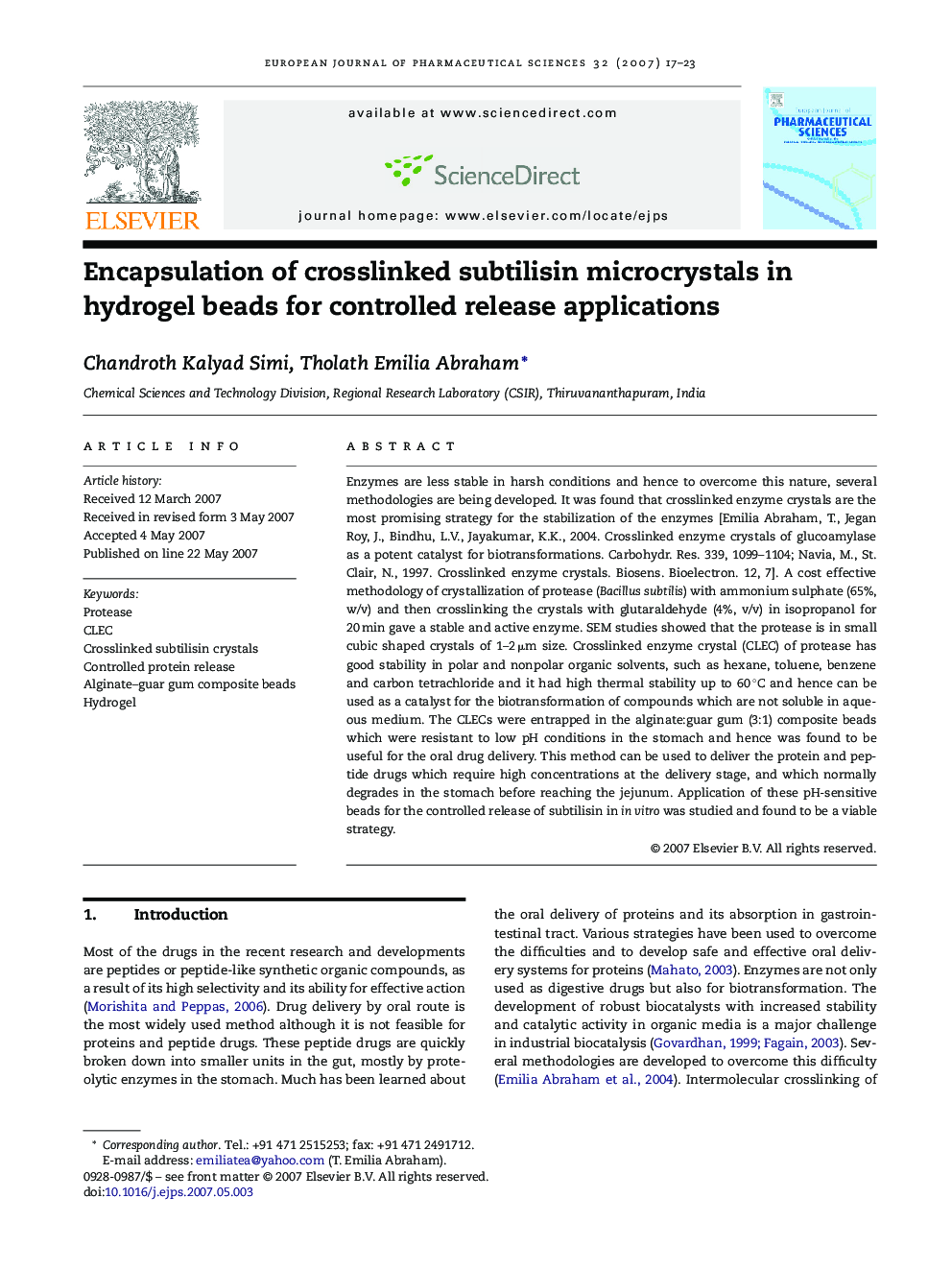| Article ID | Journal | Published Year | Pages | File Type |
|---|---|---|---|---|
| 2481948 | European Journal of Pharmaceutical Sciences | 2007 | 7 Pages |
Enzymes are less stable in harsh conditions and hence to overcome this nature, several methodologies are being developed. It was found that crosslinked enzyme crystals are the most promising strategy for the stabilization of the enzymes [Emilia Abraham, T., Jegan Roy, J., Bindhu, L.V., Jayakumar, K.K., 2004. Crosslinked enzyme crystals of glucoamylase as a potent catalyst for biotransformations. Carbohydr. Res. 339, 1099–1104; Navia, M., St. Clair, N., 1997. Crosslinked enzyme crystals. Biosens. Bioelectron. 12, 7]. A cost effective methodology of crystallization of protease (Bacillus subtilis) with ammonium sulphate (65%, w/v) and then crosslinking the crystals with glutaraldehyde (4%, v/v) in isopropanol for 20 min gave a stable and active enzyme. SEM studies showed that the protease is in small cubic shaped crystals of 1–2 μm size. Crosslinked enzyme crystal (CLEC) of protease has good stability in polar and nonpolar organic solvents, such as hexane, toluene, benzene and carbon tetrachloride and it had high thermal stability up to 60 °C and hence can be used as a catalyst for the biotransformation of compounds which are not soluble in aqueous medium. The CLECs were entrapped in the alginate:guar gum (3:1) composite beads which were resistant to low pH conditions in the stomach and hence was found to be useful for the oral drug delivery. This method can be used to deliver the protein and peptide drugs which require high concentrations at the delivery stage, and which normally degrades in the stomach before reaching the jejunum. Application of these pH-sensitive beads for the controlled release of subtilisin in in vitro was studied and found to be a viable strategy.
